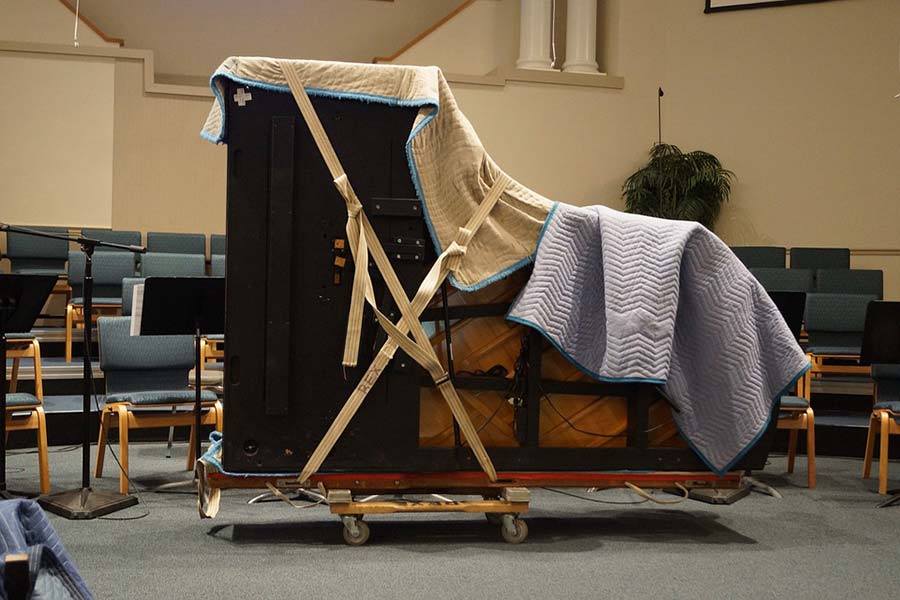A piano can produce impressive sounds in the right hands, but when it comes to moving day, a piano can be a cumbersome lump of metal and wood. It is, however, possible to move an upright piano yourself, although it does depend on the condition of the piano and requires certain tools. If you want to move a grand piano, it’s best to call in professional movers, because these pianos can weigh up to half a ton — and the noise that’s created if it goes wrong is best left to comedy sketches. This instrument should be at the top of your moving home checklist, as it’s a cumbersome item.
Moving an Upright Piano: Tools
To move an upright piano, you need:
- Tape
- Gloves
- Blankets
- Dolly
- Lifting straps
- A van ramp
- Cardboard pads
- At least four people
Moving an upright piano: Preparation
First, you must inspect the piano itself. Pay particular attention to the casters, as these are often completely useless and will scratch up your floor if you try to drag it. In addition, make sure all the panels are well secured. Of particular note is the panel directly underneath the keyboard, as it’s often held on by a simple latch, and this latch often is quite loose because of people’s tendency to accidentally kick the panel. Tape it up.
Place the music stand inside the piano by lifting the top lid and turning the stand inside, or simply flip the stand up, depending on the design. Secure the top lid with tape. You’ll also want to secure the lid over the keys.
The next stage is to ensure your route is clear. Allow enough space for four people to move the piano while standing next to it. This may produce comedy routines through various doorways, and you’ll need to make sure you have enough space to turn corners. Consider alternative routes, such as through patio doors.

Moving an upright piano: Moving
The next stage is to carefully move the piano onto the dolly. For this, you’ll need three or four people. Tip up the piano lengthways, and push the dolly underneath. Then, gradually lower the piano onto the dolly. The dolly should be positioned so that each side is the same distance from the pedals.
Carefully wheel the piano through the house to the van. If there are any steps involved, use the lifting straps. If you need to go down a single step, you may be able to lift the piano with the dolly. However, for any more, you need to remove the dolly and reposition it after you gone down the steps.
If the piano is upstairs, you’ll also need to use the lifting straps. Carefully lift it and go down one step at a time. In many cases, it’s safer to use moving professionals.

Moving an upright piano: The van
Place the van ramp correctly, and push and pull the piano into the van using the lifting straps. If at any point you lose control of the piano, do not try to stop it. Even better, if you have a van with a tail lift, use that.
When it’s in the van, place it flat against the back and then cushion it with the blankets. It’s a good idea to secure it in place with strapping, or you can use furniture (particularly sofas) to secure it.
Moving the piano into a new house is a matter of following the steps in reverse. Once it’s in place, make sure you get a piano tuner in to retune the instrument. Just be careful of those windows!